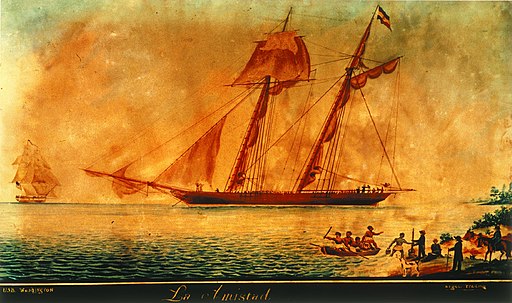The 1619 Project of the New York Times promotes awareness of 400 years of slavery in America and brings forth vital dimensions of its legacy. These dimensions have been lacking in our collective imaginations and knowledge of history. I value this instruction and hope to rise to the tasks I have given myself, to write a novel set in the period of slavery, yet which cannot depict the full force of its wrongs. I continue to weave the story of pradox and hope together while acknowledging the breathtaking history behind me.
“The United States is a nation founded on both an ideal and a lie.”
Nikole Hannah-Jones, August 14, 2019

In an opening essay, author Nikole Hannah-Jones presents a powerful and eloquent argument for interrogating the country’s founding ideals in the face of our history. The project applauds the “idealistic, strenuous and patriotic efforts of black Americans” in the formation of the American democracy. Every line of her argument is worthy of deep consideration. Here she explains history that is vital to the setting of my fiction.
At the time [1776], one-fifth of the population within the 13 colonies struggled under a brutal system of slavery unlike anything that had existed in the world before. Chattel slavery was not conditional but racial. It was heritable and permanent, not temporary, meaning generations of black people were born into it and passed their enslaved status onto their children. Enslaved people were not recognized as human beings but as property that could be mortgaged, traded, bought, sold, used as collateral, given as a gift and disposed of violently. Jefferson’s fellow white colonists knew that black people were human beings, but they created a network of laws and customs, astounding for both their precision and cruelty, that ensured that enslaved people would never be treated as such….
Nicole Hannah-Jones, Aug. 14, 2019
Enslaved people could not legally marry. They were barred from learning to read and restricted from meeting privately in groups. They had no claim to their own children, who could be bought, sold and traded away from them on auction blocks alongside furniture and cattle or behind storefronts that advertised “Negroes for Sale.” Enslavers and the courts did not honor kinship ties to mothers, siblings, cousins. In most courts, they had no legal standing. Enslavers could rape or murder their property without legal consequence. Enslaved people could own nothing, will nothing and inherit nothing. They were legally tortured, including by those working for Jefferson himself. They could be worked to death, and often were, in order to produce the highest profits for the white people who owned them.
I planned and began writing The Compromise in 2017 and wrote most of this blog starting in August 2018 exactly one year before the August 2019 explosion of interest in the history of slavery. We are in it for the long haul.
The Compromise addresses several social issues, each which could appear to diminish the others by diluting our awareness. My project of restoration starts with private relationships. My main and secondary characters are not stock. They move in and out of entanglements and affiliations of legal status, race, and gender. We construct our social world one interaction at a time. Intentional interactions have the power to change the laws and customs we live with; that is how change happens. The personal was political well before we knew it was true.
Fights may enliven fiction and the news; social justice requires collaborative work.
Remedy for Oppression
“With brave men there is always a remedy for oppression,” wrote Frederick Douglass in 1852. He was praising the brave men of the American Revolution. Adding the words, “and women,” I give the line to Miss Olivia, a teacher at the Columbian Female Academy. The young ladies hear a narrative of enslavement while waiting in a dark storm cellar. Three generations of freedom seekers tell the story: a crone, a mother, and a maiden. At the end of the story, Miss Olivia asks the girls to make the past useful to the present, what Douglass calls “the ever-living now.”

The young one passed the sleeping baby to her mother and cleared her throat. “Our mistress passed and all her kin. Folks looked at us and asked why we lived to bury all the others. Strangers came to sell us off, so we stole away. We had the stars by night and moss on the trees by day. We walked in the water to confound the bloodhounds.”
The young ladies in the cellar were leaning in and quiet. Miss Olivia raised her strong teacher's voice, “With brave men and women there is always a remedy for oppression. This you must remember. Difficulties will come. You find the way out as they have.”
The Compromise “The Tornado, 1843”
Uneasy times coming, but strength enough to hold.

The arrogance of the nation’s founders, like the arrogance of our contemporaries, could not, cannot ensure humanity or inhumanity for all posterity. Neither racism nor liberation provides a script for actors and audience in permanent roles. We need invention of possibilities. Do authors need to “stay in their lanes?” Reality moves with us. We can bow our heads and put our backs into work, but we will not be held captive.
The Compromise has a prologue. Otis begins to write for the abolitionist cause. He begins his narrative of rising out of slavery, but he “sets his pen aside, to hear a story of learning and liberation.
There is no record of my ancestry I ever saw, but men write their own histories, mapped out by facts, and propelled by ambition. I believe all this because I can dream it true.
As I write, I see my sisters with their lives ahead of them. They are white and born poor. I hope and fear for them and set my pen aside to hear them.
The Compromise, “The Prologue”
I think this transition is a moment of surprise. So often one’s ambition silences others. I struggle to keep the two narratives together even as the siblings’ destinies divide. The metaphor of the river is doing some of the work; confluences, floods, tributaries, caves, springs, temperature, shades of color, and the water’s responses to tiny changes underneath the surface. Mariah watches her brother sleep, sees their differences and reaffirms their bond.
His mother’s blood had made Otis a slave under the law. Their bodies were not theirs, not sanctioned to give to another or to hold for themselves. So in my heart, I defied the law that could be twisted away from what we knew was right. We might sleep, but we could not rest. We had to keep our heads up and our legs working so our rivers would carry us. His was the muddy Mississippi, so big you could not see across it. Mine was the Missouri, sometimes bubbling red with anger, but cold and strong from head to toe.
The Compromise, “Oxbow”

Work of holding and letting go
Mariah is my hero, not for her uncanny ability to set objectives and solve massive problems, but for her willingness to hold things together when the social world spins out of control. In the first chapter, she knows change is coming and that her future will require much work and sacrifice.
I woke to sounds of wild things stirring before the sun was up. My last dream was of a barn swallow hovering, balancing between upward and downward arcs. Then she rose, letting the current lift her. Uneasy times coming, but strength enough to hold.
The Compromise, “Stoneville 1939”
This approach to plot works against conventional wisdom. Heroes overachieve. James Scott Bell, in Plot and Structure (2004), claims that commercial fiction usually has a good guy winning over a bad guy and must have a “knockout ending.” In The Compromise, when the siblings ride into Columbia, the known-world disappears on the sun-lit edge. Mariah works inside to find her balance, and sometimes she must let it go. Freedom and captivity are like nested shells of an atom, the dancing polarities of magnetism where the physical world is alive with us. The social conditions for this are what we love and fight for, on the grand landscape of nations and the minute one within us.
Freedom of speech in the arts is one metric in our time. Without the scripts of everyday life to keep us in our lanes, we run up against our responsibilities and sometimes fail or only scrape by. Sometimes we discover and create.
“There is no man beneath the canopy of heaven, that does not know that slavery is wrong– for him.”
Frederick Douglass,”What to the Slave is the Fourth of July?” 1852
